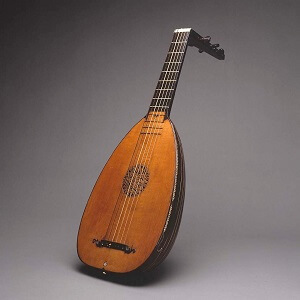Lute
 Lute, in music, any plucked or bowed chordophone whose strings are parallel to its belly, or soundboard, and run along a distinct neck or pole. In this sense, instruments such as the Indian sitar are classified as lutes. The violin and the Indonesian rebab are bowed lutes, and the Japanese samisen and the Western guitar are plucked lutes.
Lute, in music, any plucked or bowed chordophone whose strings are parallel to its belly, or soundboard, and run along a distinct neck or pole. In this sense, instruments such as the Indian sitar are classified as lutes. The violin and the Indonesian rebab are bowed lutes, and the Japanese samisen and the Western guitar are plucked lutes.
In Europe, lute refers to a plucked stringed musical instrument popular in the 16th and 17th centuries. The lute that was prominent in European popular art and music of the Renaissance and Baroque periods originated as the Arab ʿūd. This instrument was taken to Europe in the 13th century by way of Spain and by returning crusaders and is still played in Arab countries. Like the ʿūd, the European lute has a deep, pear-shaped body, a neck with a bent-back pegbox, and strings hitched to a tension, or guitar-type, bridge glued to the instrument’s belly. European lutes have a large, circular sound hole cut into the belly and ornamented with a perforated rose carved from the belly’s wood.